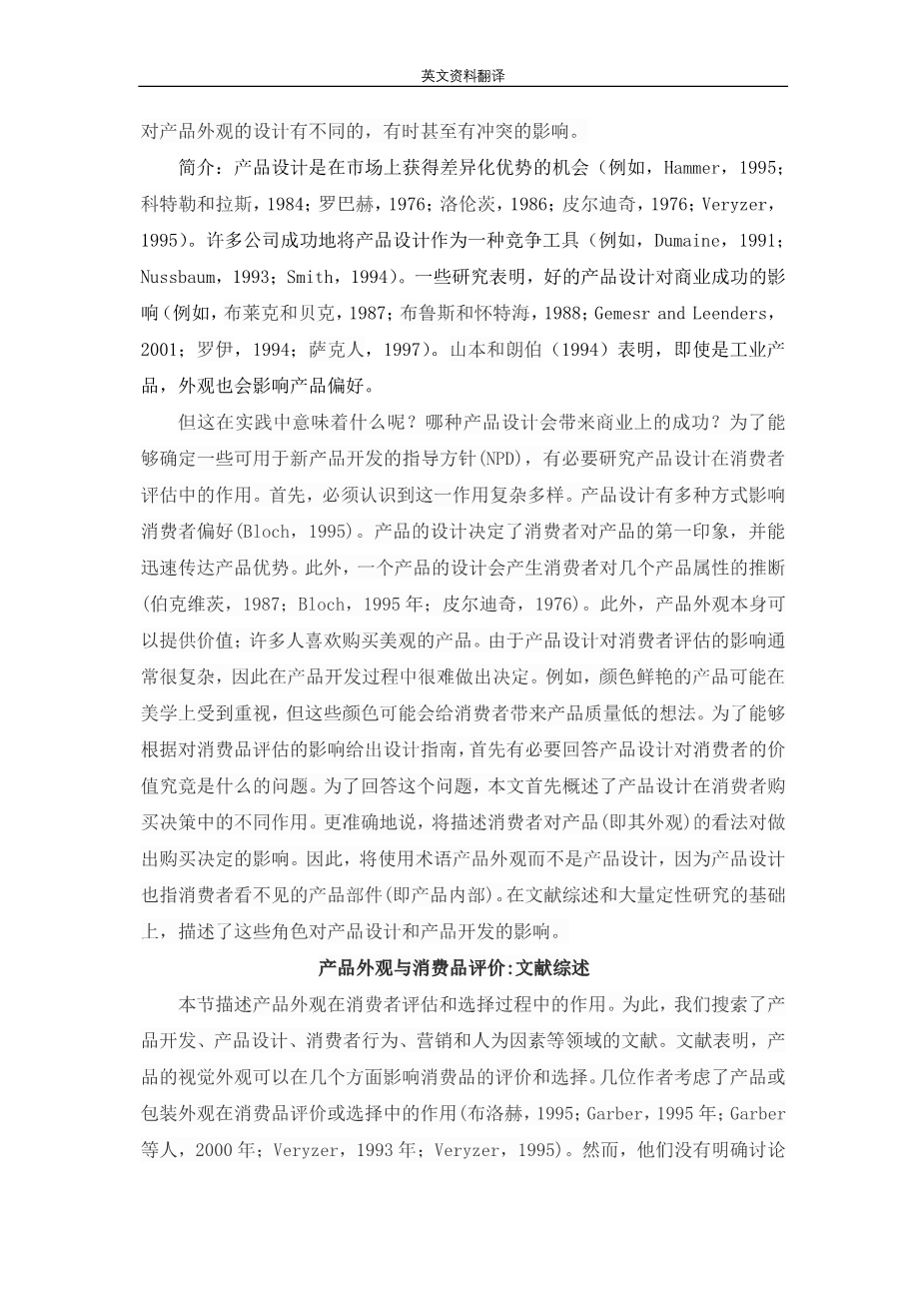The Different Roles of Product Appearance in Consumer Choice
Product design has been recognized as an opportunity for differential advantage in the market place. The appearance of a product influences consumer product choice in several ways. To help product development managers in optimizing the appearance of products, the present study identified the different ways in which the appearance of a product plays a role in consumer product evaluation and, hence, choice. In addition, the implications for product design of each role are listed, and managerial recommendations for optimizing the appearance of products are given.
Based on a literature review, six different roles of product appearance for consumers are identified: (1) communication of aesthetic, (2) symbolic, (3) functional, and (4) ergonomic information; (5) attention drawing; and (6) categorization. A productrsquo;s appearance can have aesthetic and symbolic value for consumers, can communicate functional characteristics and give a quality impression (functional value), and can communicate ease of use (ergonomic value). In addition, it can draw attention and can influence the ease of categorization of the product. In a large qualitative study (N5142) it was tested whether these roles indeed exist in consumersrsquo; process of product choice and whether they are sufficient to describe the way in which product appearance plays a role for consumers. In addition, qualitative insight into these roles was gained. After making a choice between two answering machines, subjects were interviewed about the reasons for their choice and the product information they used to form the judgments underlying their choice reasons.
The six appearance roles indeed proved relevant for consumers and were sufficient to describe the influence of product appearance on product choice. The number of ways in which appearance played a role for consumers differed between 0 and 5; most subjects mentioned two different ways in which appearance influenced their product choice. The aesthetic and symbolic roles were mentioned most often.
The preferred shape (e.g., rounded or angular), color, or size were found to differ depending on the way in which product appearance played a role for subjects. For example, bright colors may be valued from an aesthetic point of view but may diminish the impression of quality (i.e., functional value). This makes it difficult to optimize all roles and illustrates that the product value that is most important for consumers when purchasing a specific kind of product should be the starting point in the design of the product appearance. Furthermore, the influence of shape, color, or size on a certain kind of product value—aesthetic, symbolic, ergonomic, or functional—differed between subjects. One person may like a rounded shape, while another may prefer a rectangular shape. This means that the value of guidelines indicating how the perception of a specific kind of product value can be engendered by means of shape, color, and size is limited. This is especially the case for aesthetic and symbolic product value, which are very personal. Therefore it is recommended to test the performance of the appearance of a newly developed product on these six roles with the target group of consumers.
Insight into the different ways in which appearance characteristics, such as form and color, may influence consumer choice will increase managersrsquo; awareness about how to use product appearance as a marketing tool. In addition, distinguishing these six appearance roles will help product development managers to optimize the product appearance better to market needs, as the roles have different and sometimes even conflicting implications for the design of the product appearance.
Introduction: product design is an opportunity for differential advantage in the marketplace (e.g., Hammer, 1995; Kotler and Rath, 1984; Louml; bach, 1976; Lorenz, 1986; Pilditch, 1976; Veryzer, 1995). A number of companies successfully focus on product design as a competitive tool (see, e.g., Dumaine, 1991; Nussbaum, 1993; Smith, 1994). Several studies indicate the influence of good product design on commercial success (e.g., Black and Baker, 1987; Bruce and Whitehead, 1988; Gemser and Leenders, 2001; Roy, 1994; Thackara, 1997). Yamamoto and Lambert (1994) showed that even for industrial products, appearance has an influence on product preference.
But what does this mean in practice? Which product design will lead to commercial success? To be able to define some guidelines that can be used in new product development (NPD), it is necessary to look at the role of product design in consumer evaluation. First, it must be recognized that this role is complex and diverse. There are a number of ways in which product design influences consumer preference (Bloch, 1995). The design of a product determines consumersrsquo; first impression of the product and quickly can communicate product advantage. In addition, the design of a product will generate consumer inferences regarding several product attributes (Berkowitz, 1987; Bloch, 1995; Pilditch, 1976). Furthermore, product appearance can provide value in itself; many people like to buy a product that looks aesthetically pleasing. As the influence of product design on consumer evaluation is often complex, it is difficult to decide upon during the product development process. For example, a product with bright colors may be valued aesthetically, but these same colors may give consumers the idea that the product is of low quality.
To be able to give guidelines for design following from its influence on consumer product evaluations, it is necessary first to answer the question of what exactly constitutes the value of a product design for consumers. In order to answer this question, the present article begins with an overview of the different roles of the product design in the
剩余内容已隐藏,支付完成后下载完整资料
英语译文共 24 页,剩余内容已隐藏,支付完成后下载完整资料
资料编号:[246024],资料为PDF文档或Word文档,PDF文档可免费转换为Word
以上是毕业论文外文翻译,课题毕业论文、任务书、文献综述、开题报告、程序设计、图纸设计等资料可联系客服协助查找。




